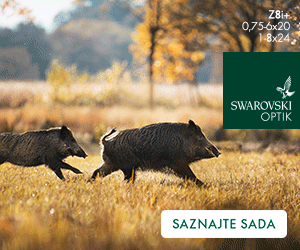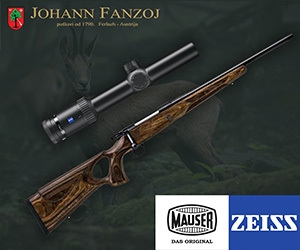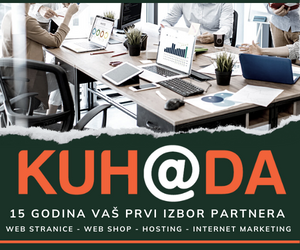FCI-Standard N°: 104 / 24/07/1996 / GB
FCI Klasifikacija:
Grupa: 8 - Retriveri, šunjkavci i psi za vodu
Sekcija: 2 - Šunjkavci
Sa radnim ispitom.
Zemlja porijekla: Njemačka
Povijest: Osamdesetih godina devetnaestog vijeka, grupa njemačkih lovaca je odlučila da ponovo afirmira (točnije da je ponovo stvori) Stober rasu pasa, raznovrsnih lovačkih sposobnosti, spominjana u njemačkoj povijesti početkom osamnaestog vijeka. Stober je bio poznat kao dobar tragač krvi. Tragovi ove rase, nađeni u Bavarskoj, su ukrštani sa sportskim španijelima koji su bili dokazani kao strastveni lovci. Wachtelhund, kako se zove u Njemačkoj, je zvaničko priznat 1903 godine. Njemački klub njemačkih prepeličara (Verein fur Deutsche Wachtelhund[1] - VDW ) dozvoljava samo lovcima i lovočuvarima da posjeduju ovu vrstu, pa se psi ove rase ni ne prodaju ne-lovcima. Njemački prepeličar je priznat od UKC i FCI 1996-godine.
- Životni vijek: 12 - 14 godina
- Mužjak
- Visina 46-54 cm
- Težina 20-28 kg
- Ženka
- Visina 44-52 cm
- Težina 20-28 kg
Njemački prepeličar je koščat, mišićav pas iz porodice španijela, srednje veličine sa dugačkim, gustim i valovitim krznom. Njegova čvrstoća mu omogućuje da savlada i težu divljač kao što su zečevi i lisice. Uši su dugačke, ali ne do vrha, nego do sredine njuške. Dva puta su duži nego viši (u pitanju je dužina od grebena do korijena repa, a visina do grebena). Malo je veći od springer španijela. Dlaka na glavi je kratka i meka.
Izgled: Njemački prepeličar je živahne i prijatne naravi i dobar je i kao radni pas i kao kućni ljubimac. Veličinom i kratkoćom nalikuje njemačkom dugodlakom ptičaru, ali nije tako visokonog, već je pas izražene pravokutne figure. Malom nosaču velikih tereta (lisica i zec) kakav je ovaj, potrebna je figura nenaglašene dužine. Njemački prepeličar treba da ima, dobre kosti i mišiće, nije niti visokog rasta niti nalik na hrta, niti je težak i nizak. Mnogo više mora biti mišićav i i da ima suhe i jedre kosti, izraženih dugih linija, što znači da je dug u grebenu i sapima, veoma kratak u leđima i sa širokim i snažnim bubrežnim dijelom, tako da na povodcu odaje više utisak pravokutnog, nego kratkog psa. Ova rasa mora posjedovati i snagu i izdržljivost za najduži lovni dan na teškom terenu i/ili snijegu
Dva tipa boja:
-
- Jednobojno, tamno braon, puno puta sa bijelom oznakom na grudima i prstima, takođe sa crvenim ili žutim paležom iznad očiju, na njušci, na nogama i oko analnog otvora. Boja zemičke je nepoželjna.
- Braon sinja boja. Ovdje je sinja boja osnovna (bijela i braon su tijesno pomiješane) često braon glava, braon plećke takođe i braon plašt preko cijelih leđa.
Ovdje pripada i braon bijelo tačkasto sa bijelom osnovnom bojom i tigrasto sa bijelo-prskana i tačkasta osnovna boja i braon ploče, kao i trobojnost, a to znači braon-sinje boje, prskano ili tigrasto sa žutim ili crvenim paležom, kao kod jednobojnog, zatim crveno ili narandžasto-sinje boje i prskan kod kojih se umjesto braon pojavljuje crvena ili naradžasta.
Temperament: Ova rasa je raznovrsna po načinima na koji se može upotrijebiti za lov. Koriste se za lov na brdsku divljač, sa dobrim mogućnostima dobavljanja kao i bilo koja vrsta retrivera. Također su odlični i kao goniči, u praćenju krvavog traga, i izvrstan ptičar. Veoma inteligentan pas, agresivan u lovu i u vodi.
Beryl - Deutscher Wachtelhund
Drugi nazivi: Deutscher Wachtelhund - German Spaniel - Njemački prepeličar
Standard FCI No 104 / 24.07.1996. /GB
Deutscher Wachtelhund - German Spaniel
TRANSLATION : C. Seidler.
ORIGIN : Germany.
DATE OF PUBLICATION OF THE ORIGINAL VALID STANDARD : 24.07.1996.
UTILIZATION : Flushing Dog, versatile hunting dog.
CLASSIFICATION F.C.I. : Group 8 Retrievers, Flushing Dogs, Water Dogs.
Section 2 Flushing Dogs.
With working trial.
BRIEF HISTORICAL SUMMARY : From hunting literature, it can be proved that hunting dogs resembling the present day Wachtelhund have existed for centuries and have been used for flushing game. The term « Wachtelhund » also has historic origins.
Breeding of the German Spaniel, according to a stud book, began at the turn of the century.
The progenitor of the breed was « Lord Augusta 1834 L », who came from Staufenberg (Upper Bavaria). Pure breeding began with a few suitable bitches. At first only brown dogs (sometimes with white markings), and white-brown dogs were bred, the latter occasionally with small tan (red) markings on head and legs, the so-called « Brand ». Through the bitch, « Baby auf der Schanze 1838 L », the brown roan colour occurred in the breed.
Rudolf Friess (R.F.), who influenced the breeding of the German Spaniel for decades, introduced the separate colour breeding for browns and roans. By carefully planned matings within both colour strains he succeded to establish the important precondition - in spite of the small gene pool - to keep away from the damages through inbreeding.
The separation of the colour strains seemed also sensible in view of the somewhat different dispositions of the dogs.
The browns as short distance hunters, easier to make them hunt the game towards the guns, the brown roan colour as long distance hunters, specially willing to follow a trail.
The difference in disposition can nowadays no longer be regarded as a valid distinction between the two strains, as in the meantime, for various reasons, numerous matings between the two strains had taken place. Generally, however, the separation still counts today as a preservation of an unrelated reservoir of blood within the breed.
The German Spaniel was and is still bred exclusively by hunters for hunters as a flushing and versatile hunting dog.
GENERAL APPEARANCE : The German Spaniel is a medium sized, long-haired, very muscular flushing dog with noble head and strong bone. Altogether longer than high, but never looking high on leg.
IMPORTANT PROPORTIONS :
Relation to body length to height at withers : 1,2 to 1.
Relation to depth of chest to height at withers : 0,5 to 1.
Relation of muzzle to cranial region : 1 to 1.
BEHAVIOUR / TEMPERAMENT : Lively, passionate hunter, friendly, assured, very docile and adaptable, neither nervous nor aggressive.
Characteristics of the German Spaniel are :
- Possessed of a strong desire to find.
- Able to pick up scent, firm in tracking.
- Reliable at giving tongue.
- A fine nose.
- Likes retrieving and work in water.
- Sharp with game and vermin.
- Working independently but still in a controlled manner when appropriately trained and guided; reliable for tracking wounded game, retrieving lost game and flushing; a versatile gundog especially for woodland with heavy cover and water.
The trait to point was not given attention since breeding began.
HEAD
CRANIAL REGION :
Skull : Flat, moderately broad, no marked occiput.
Stop : Only moderately developed.
FACIAL REGION :
Nose : Nose leather large and dark with wide open nostrils. Depigmented patches are a fault. Roman nose embellishes the dog.
Muzzle : Strong with nasal bridge remaining evenly broad, slightly rounded towards the end. On no account pointed, not shorter than cranial region.
Lips : Straight, dry, taut. Pigment according to coat colour.
Jaws/Teeth : Complete set of 42 teeth in the following order seen diagramatically from the front :
Right M P C I I C P M Left
Upper jaw 2 4 1 3 3 1 4 2 Upper jaw
Lower jaw 3 4 1 3 3 1 4 3 Lower jaw
Definition of above tooth formation : I = Incisor, C = Canine, P = Premolar, M = Molar.
Incisors in upper jaw close in incisor bite in front of those in lower jaw. Pincer bite will be tolerated. Teeth well developed, strong.
Cheeks : Dry, skin taut, cheek bones not protruding.
Eyes : Medium brown, as dark as possible. Medium size, set in slightly oblique, neither protruding nor deep set with tight fitting lids, not showing any haw. Hair on rims of eyelids.
Leathers : Set on high and broad, flat without any twist, hanging directly behind eye. Not thick, fleshy or flabby. Evenly furnished with hair reaching over inner edge. Laid forward, leathers reach nose leather.
NECK : Strong, nape of neck specially well muscled. Merging with withers in a blunt angle. No visible throatiness at beginning and widening towards chest without dewlap.
BODY :
Upper line : Straight in the different parts of the body, merging well into each other. Croup slightly sloping, tail in continuation with topline or carried slightly downwards.
Withers : Strong and well defined.
Back : Short and firm, without any dip behind withers.
Loins : Strongly muscled, therefore broad in appearance.
Croup : Slightly sloping, never overbuilt. Slightly below height of withers.
Chest : Oval, seen from front. Seen from side, reaching to below elbow joint. Ribcage long, well sprung, neither barrel shaped nor flat.
Lower line and belly : Tucked up moderately from last (false) rib to rear. Underside also covered as much as possible by protective hair and undercoat.
TAIL : In repose, carried straight in continuation of topline or downwards. When alert or excited, carried slightly upwards and wagging vividly. To avoid injury, the tail should be shortened (docked) by not more than a third during the first three days after birth. In countries where docking is not permitted, the tail can be left natural.
LIMBS
FOREQUARTERS :
General : Seen from front, straight and parallel, seen from side, legs well under body, standing vertical to ground. Good angulations.
Shoulder : Strongly muscled. Shoulder blade well laid back.
Upper arm : In movement, sliding along close to chest.
Elbows : Close to body, turning neither in nor out.
Forearm : Straight, connection with joints not rickety.
Pastern joint (carpus) : Strong.
Pastern : Set slightly oblique.
Front feet : Spoon shaped. Toes close to each other, cat-or harefoot undesirable. Coarse, resistant, well pigmented pads and strong nails which get well worn down.
HINDQUARTERS :
General : Seen from side, good angulation in stifle and hock joints. Seen from rear, straight and parallel, neither bow-legged nor cow hocked; strong bone.
Upper thigh : Broad and very muscular, good angulation between pelvis and upper thigh.
Stifle : Strong with good angulation between upper and lower thigh.
Lower thigh : Long, muscular, sinewy.
Hock joint : Strong.
Hock : Short. Vertical stance.
Hind feet : As front feet.
GAIT / MOVEMENT : Fluent and ground covering. Legs straight and parallel sliding closely along the body.
SKIN : Coarse and close fitting, no folds and pigmentation.
COAT
HAIR : Strong, close fitting, mostly wavy, sometimes curly (astrakhan) or smooth long coat, with thick undercoat. Hair not too long, much less thin or even silky. On nape, leathers and croup, often curly. Rearside of legs and tail, well feathered. Frequently frill on neck (jabot). Also well coated on belly.
Muzzle and cranial region : Hair short but dense. The leathers are covered by curls or dense wavy hair which also reaches beyond their inner edge. Interdigital gaps have dense but not too long hair.
COLOUR : The German Spaniel is bred in two colour varieties :
- Solid brown, and more seldom also red*, including all occurring reddish shades (like fox or deer red). Also often with white or ticked markings on chest and toes.
- Brown roan, more seldom red* roan. As basic colour, brown or red* hair is closely mixed with white hair. Often with the head brown or red*, as well as with patches or a saddle over the whole back. To this colour variety also belong the pied colour patterns with white as basic colour and large brown or red* patches as well as «tiger» pattern where the white basic colour is in addition sprinkled or ticked with clusters of brown or red* hair, even when bred from solid colour parents. In both colours, red* markings («Brand») over eyes, on muzzle, legs and round vent can occur.
* Red = all existing reddish shades (fox, roedeer or deer red).
SIZE AND WEIGHT :
Height at the withers : Dogs : 48 to 54 cm,
Bitches : 45 to 52 cm.
Weight : Varying, according to size, between 18 to 25 kg. Bitches are slightly lighter than dogs.
FAULTS: Any departure from the foregoing points should be considered a fault and the seriousness with which the fault should be regarded should be in exact proportion to its degree.
- Marked stop.
- Missing of a first premolar (PM1).
- Too deep flews, lips not enough taut.
- Eyelids not close fitting.
- Too narrow ear channels (disposition for ear trouble).
- Barrel chest.
- High on leg or fine bone.
- Thin, sparse or silky coat; sparsely coated belly. Ear ends leathery.
- Slightly over or under in size or weight.
SERIOUS FAULTS :
- Skins problems : Dermatitis, atopy.
- Missing teeth, apart from the lack of one PM1.
ELIMINATING FAULTS :
- Weak temperament, gun-or game-shy.
- Serious mouth faults (over-or undershot, wry mouth).
- Entropion, ectropion.
- Black coat colour.
N.B. : Male animals should have two apparently normal testicles fully descended into the scrotum.





















